Delicious and rich taste
Yes, tasty is the first reason that Vietnamese food has been conquering millions of food lovers around the world. From starters, main courses, desserts, to even junk foods, all have a typical flavor and very yummy.
It sounds obvious because, of course, deliciousness is one of the main reasons that people love food in general. But what makes Vietnamese food tasty in particular?
Actually, I used to think that the art behind a delectable dish in Vietnam was the mix of ingredients and spices that we like.
However, I realized that Vietnamese cuisine is not simply based on the subjectivity of the chef, but also relied on important principles that few people know about. This is one of the top secrets behind the curtain.
Principle of five-element correspondence
To begin with, it’s necessary to discover the philosophy of five-element correspondence as it is the foundation of Vietnamese cuisine.
According to this concept, dishes in Vietnam are based on a correspondence of Big Fives:
- Five fundamental flavors: sour, bitter, sweet, spicy, salty
- Five types of nutrients: carbohydrates, fat, protein, minerals, water
- Five main colors: green, red, yellow, white, black
- Five senses: visual, taste, touch, smell, sound.
- Five elements in the universal: Wood, Fire, Earth, Metal, and Water
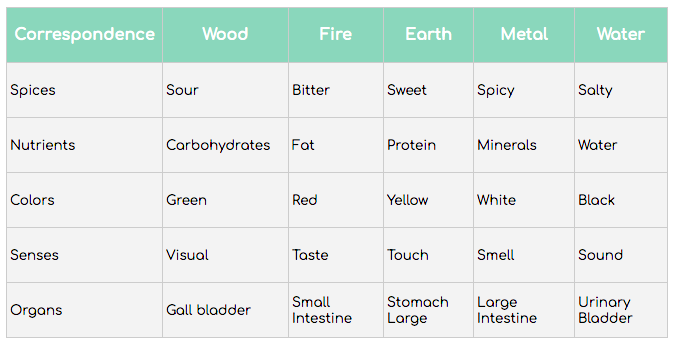
When making a dish, Vietnamese people always manage these five elements to ensure the harmony among ingredients and balanced flavors.
If an element is added, we need to think about what is the next complimentary element to put into the dishes.
Let’s take Spring Roll (Nem) as an example. To make it, we need pork and/or shrimp, vermicelli, wood ear mushroom, taro, carrot, green onion, red onion, egg, rice paper, oil, garlic, fish sauce, chili, lemon, sugar.
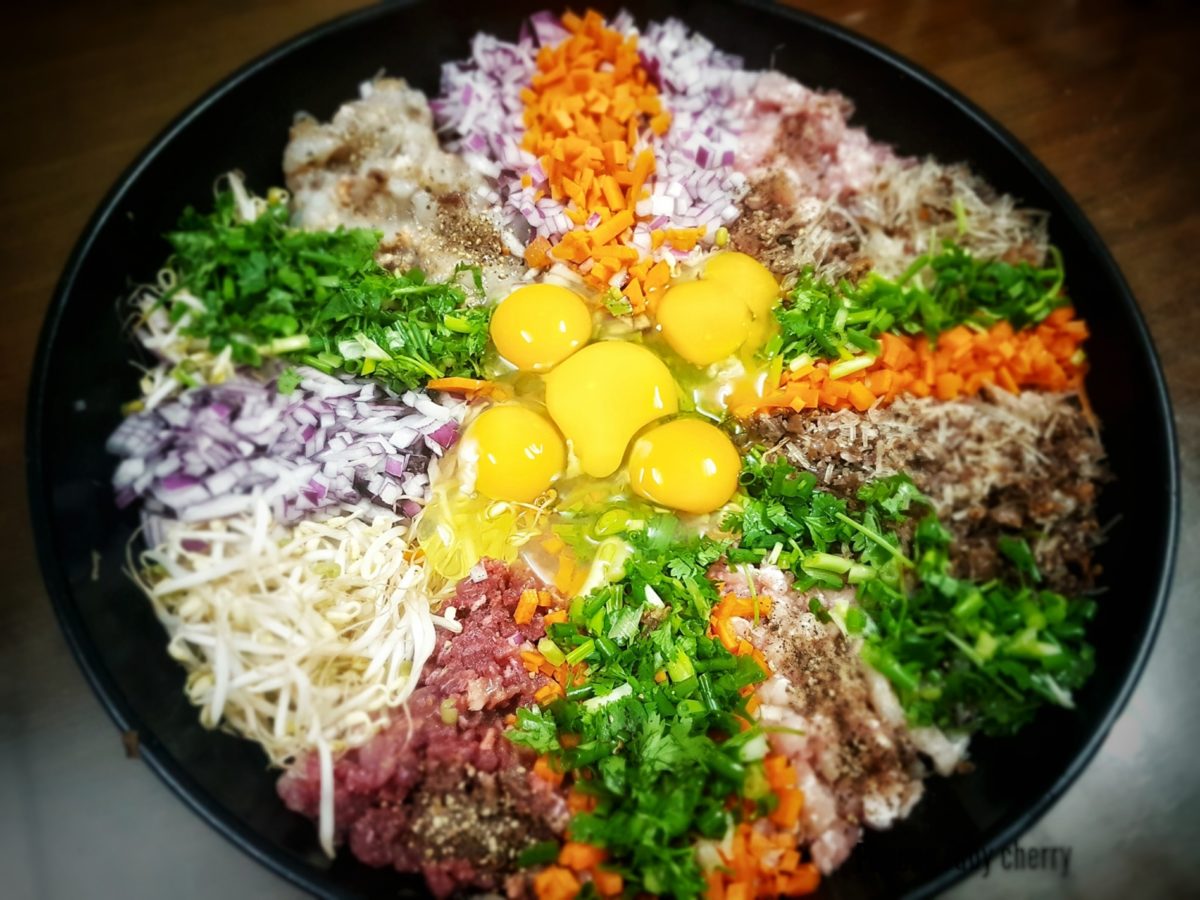
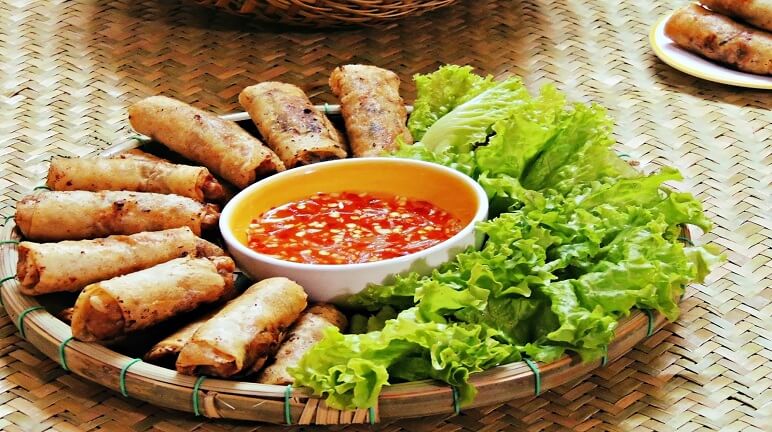
These ingredients are followed to the five-element correspondence principle of Vietnamese cuisine to bring a memorable flavor to this dish. If you have already eaten Spring Roll (Nem), you would know what I mean.
Principle of yin-yang balance

The art of Vietnamese cooking is also based on the yin-yang balance.
The philosophy of yin and yang (Âm dương in Vietnamese) is to keep the necessary harmony of nutrients so that our body can better benefit as well as avoid harmful effects from them.
According to this concept, each ingredient has its own “heating” (yang) and “cooling” (yan) characteristics. That’s why we need to know which element should go along well with which one to create a delicious end taste and good for health.
For example, the Vietnamese often eat seafood (which is considered cold) with a sauce of ginger and chili which brings a warm touch to the meal.
Thanks to applying this principle, Vietnamese food always stays balanced, delicious, and healthy.
Variety of choices
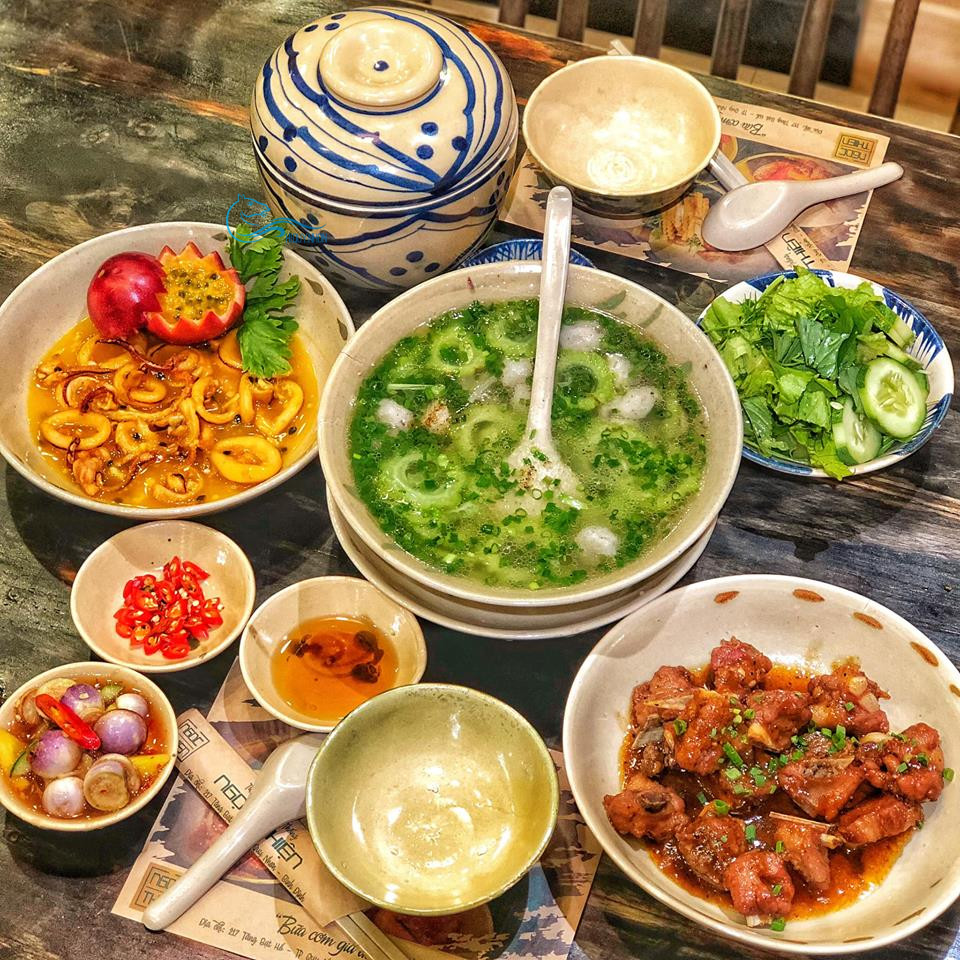
The deliciousness is important but it’s not enough. It also needs to be diversified. Imagine that you just have a few choices and repeat eating the same things over and over. Well, I’m not sure if you would love to eat that food again.
With Vietnamese food, this issue is not going to happen. Because we have a wide range of different menus for you to choose from.
As you may know, the territory of Vietnam is divided into three distinct regions: North, Central, and South. Each region has its own unique taste and cooking methods. This is the first reason that makes Vietnamese food very diverse.
Plus, with the influence of China and France during the colonization, Vietnamese cuisine keeps enriching its diversity even more.
Accordingly, we have a wide variety of dishes that are totally different from the taste, texture, smell, color, and different ways to enjoy them. There are thousands of different food that have been cooked and served every day in my country.
This means that you can then spend years eating Vietnamese meals without repeating the same food. If you are currently struggling with “what I am going to eat today?”, visit Vietnam and everything will be solved.
A SIDE STORY:
With the same type of noodle, but if we use different ways to cook with different ingredients, then combining it with different broth, herbs, and sauce, it’s going to be a totally different meal.
For Vietnamese people, it’s easy to realize the dissimilarity, but with my international friends, it’s a real challenge.
I remember that on a trip to Vietnam with my partner and a French friend of mine last February, whenever they asked me what to eat, I recommended noodles (well it’s no surprise as I am a huge fan of this food)
But for them noodle is noodle, there’s no difference between Phở, Hủ Tiếu, and Bún Bò Huế! All noodle soups seem the same. Because of that, they were begging me to eat anything else but noodles And we, therefore, changed to eat rice!
I think this might be a similar concept to pasta in Europe. With the same kind of pasta, if we add different sauces and cook it differently, it’s going to be different, right? Carbonara cannot be the same as bolognese.
The magic of the fresh herbs and vegetables
One of the top elements that make diners fall in love with Vietnamese food is fresh herbs (Rau Thơm in Vietnamese) and vegetables.
With a very specific smell, color, and texture, herbs and vegetables contribute to making Vietnamese dishes more typical, delicious, and delicate.
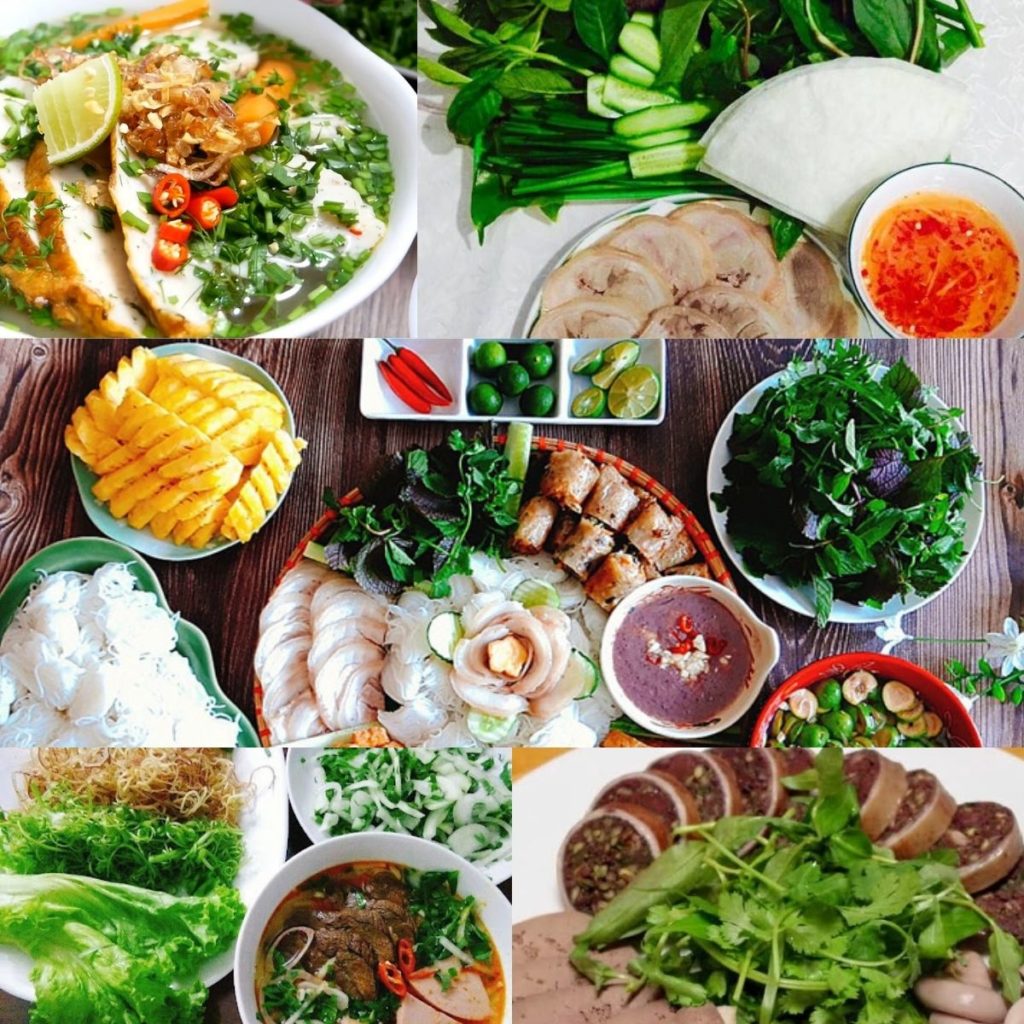
This ingredient goes along well with almost all dishes in my country. From a family meal to street food or in a luxury restaurant, the presence of herbs and vegetables is indispensable.
For example, chicken salad (Gỏi Gà) will lose its attraction without the Vietnamese coriander (Rau răm), beef noodle soup (Bún Bò Huế) will not be complete its taste without green onions, coriander, cilantro, basil, banana flowers, bean sprouts, water spinach.
Also, depending on each food, we will eat different herbs in different ways.
Let’s take Phở as an example. Herbs for Phở should be green onions, coriander, cilantro, basil. We just simply put all of them into a bowl and eat them hot.
However, when it comes to fresh spring rolls (bánh tráng cuốn or gỏi cuốn), you need to enjoy herbs raw and fresh. Different from Phở, we eat perilla (tía tô), lettuce (diếp cá), Vietnamese cilantro (rau răm), chives (hẹ) for fresh spring rolls.
Since I live in France, it’s not easy for me to find some of my favorite herbs and vegetables that I used to eat very often in Vietnam.
Apart from mint, dill, basil, green onion, and cilantro, I have never seen French people using perilla, lettuce, lemongrass, bitter herb, bitter melon, gourd, Vietnamese cilantro, etc for their food.
Personalize to your taste
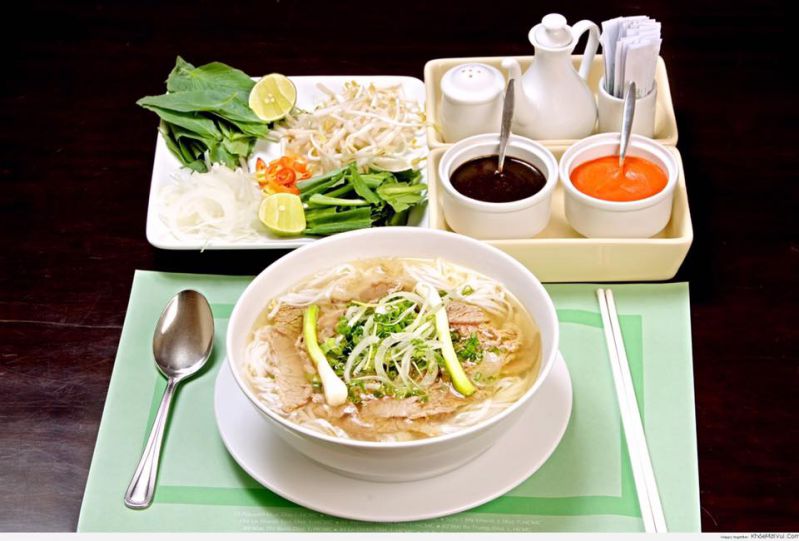
Vietnamese food has its own typical flavors but still being flexible to suit your taste.
Meals in Vietnam are cooked with a taste of chef’s standards. However, as each diner has a different preference, Vietnamese dishes are normally accompanied by some common sauces and dipping sauces such as fish sauce, soy sauce, fermented shrimp paste, chili sauce, black sauce, satay, etc.
These condiments help you tailor your dishes so that you can enjoy the meal in your way. In case you want to make the taste saltier, you can add a little fish sauce. If you are a big fan of spiciness, chili sauce and satay obviously will help you.
Even with herbs, you can choose what you do want and don’t want to eat by yourself. For example, I never take perilla for eating Bánh Xèo (savory Vietnamese Crêpe), even though this herb is going very well with this dish. I just simply don’t like perilla.
Light and Healthy

“Is Vietnamese food healthy?” is one of the Frequently Asked Questions. The answer is absolutely YES.
Apart from light meals, we also have a few heavy dishes with full of fat and sugar. However, in general, we don’t use a lot of oil, cheese, cream in our recipes. So, the majority of Vietnamese food is healthy, light to eat and pretty suitable for those who are on diet.
In addition, based on what I shared above, dishes in Vietnam contain a lot of vegetables and herbs which are friendly and good for health. Furthermore, with a great balance of ingredients, each meal always provides enough nutrients and energy for our activities every day.
Cheap, anytime and everywhere
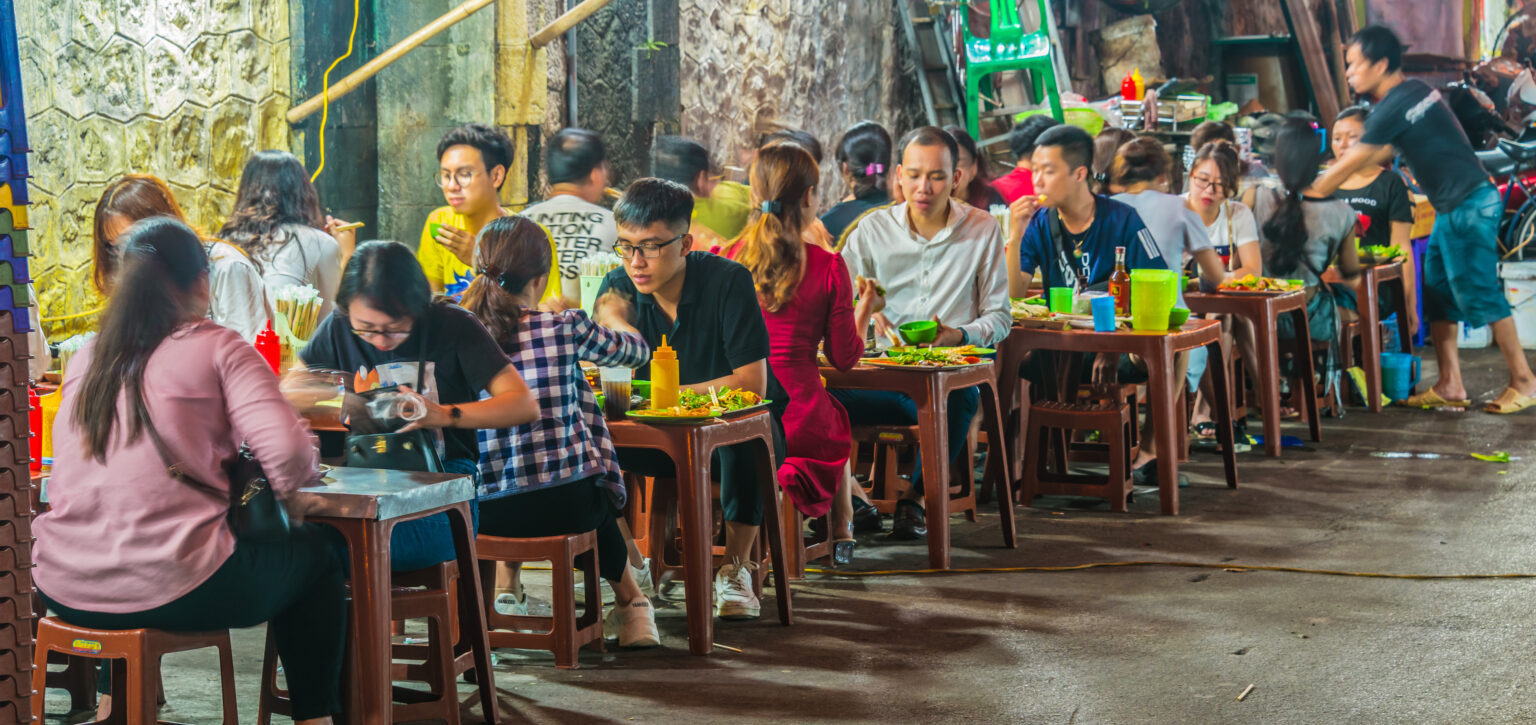
I would say Vietnam is the paradise of food. Putting your footprint in my country and you will never worry about being hungry. Food is not expensive, everywhere, and available anytime you want.
From luxury meals in high-class restaurants to street food, all are delicious and value for money.
In particular, street food is king in Vietnam. It’s cheap, various, local, tasty, and fast (I mean really fast, just in around 3-5 minutes you could already have what you ordered).
That’s why McDonald’s has been successful in many Asian markets but failed to expand their presence in Vietnam. This fast-food chain is not fast enough, not cheap enough, and not convenient enough to convince the Vietnamese to spend their pocket.
Over to you
Food is an important part of Vietnamese culture. The way we cook, the way we serve, and the way we eat have been enriching our cuisine as well as building our food reputation in over the world.
Through this article, I believe that you learn something new about Vietnamese cuisine and discover what makes Vietnamese food so good. If you’ve ever eaten Vietnamese food, I’m curious what do you think of it? In case you still haven’t, are you willing to try it?
Feel free to let me know your thoughts and don’t hesitate to ask me if you have any questions in the comment section below. Another article in the Vietnamese food series will be published soon. So, stay tuned!
If you would like to stay updated with the latest content, ensure to subscribe to the AMA Vietnam blog today 🙂
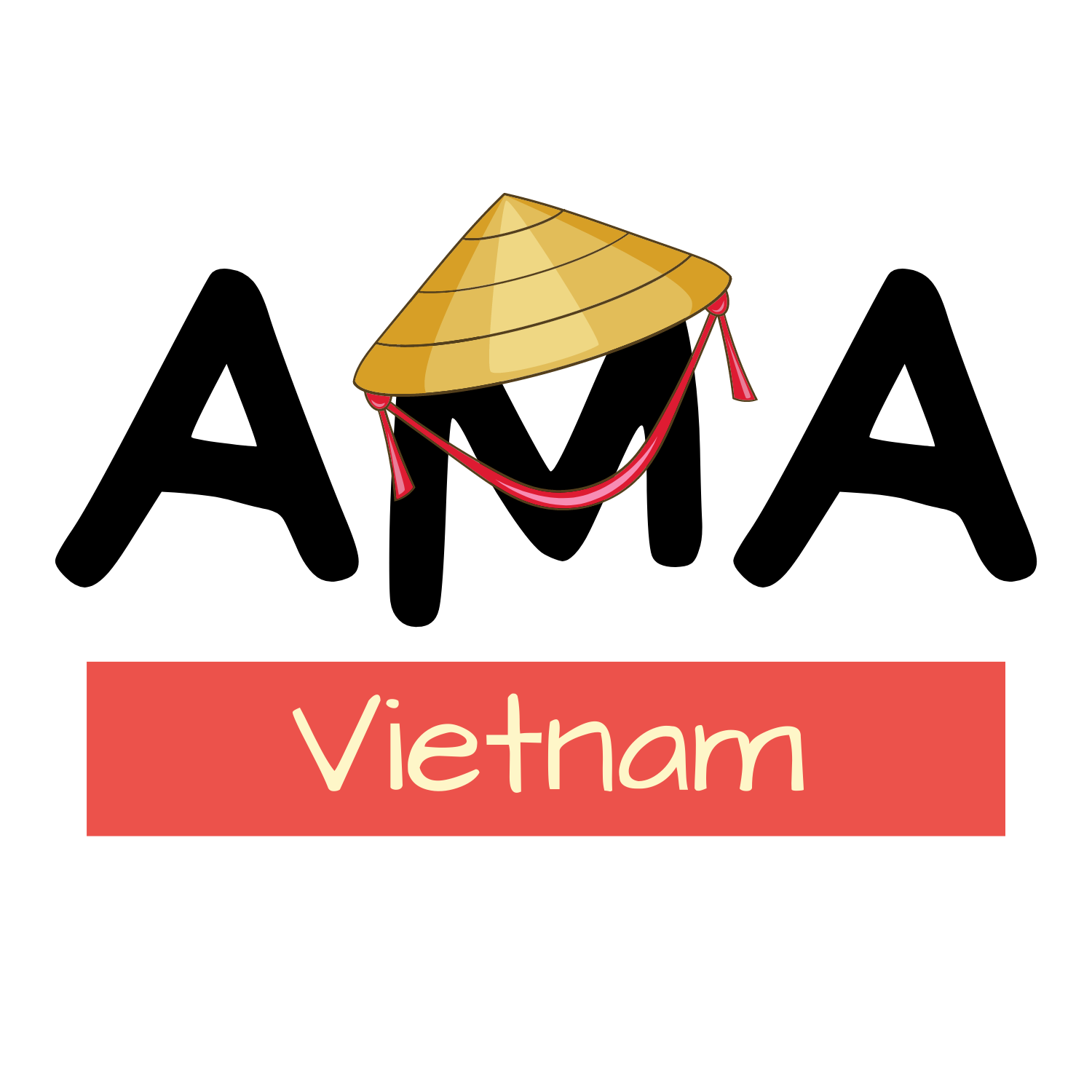
One Response